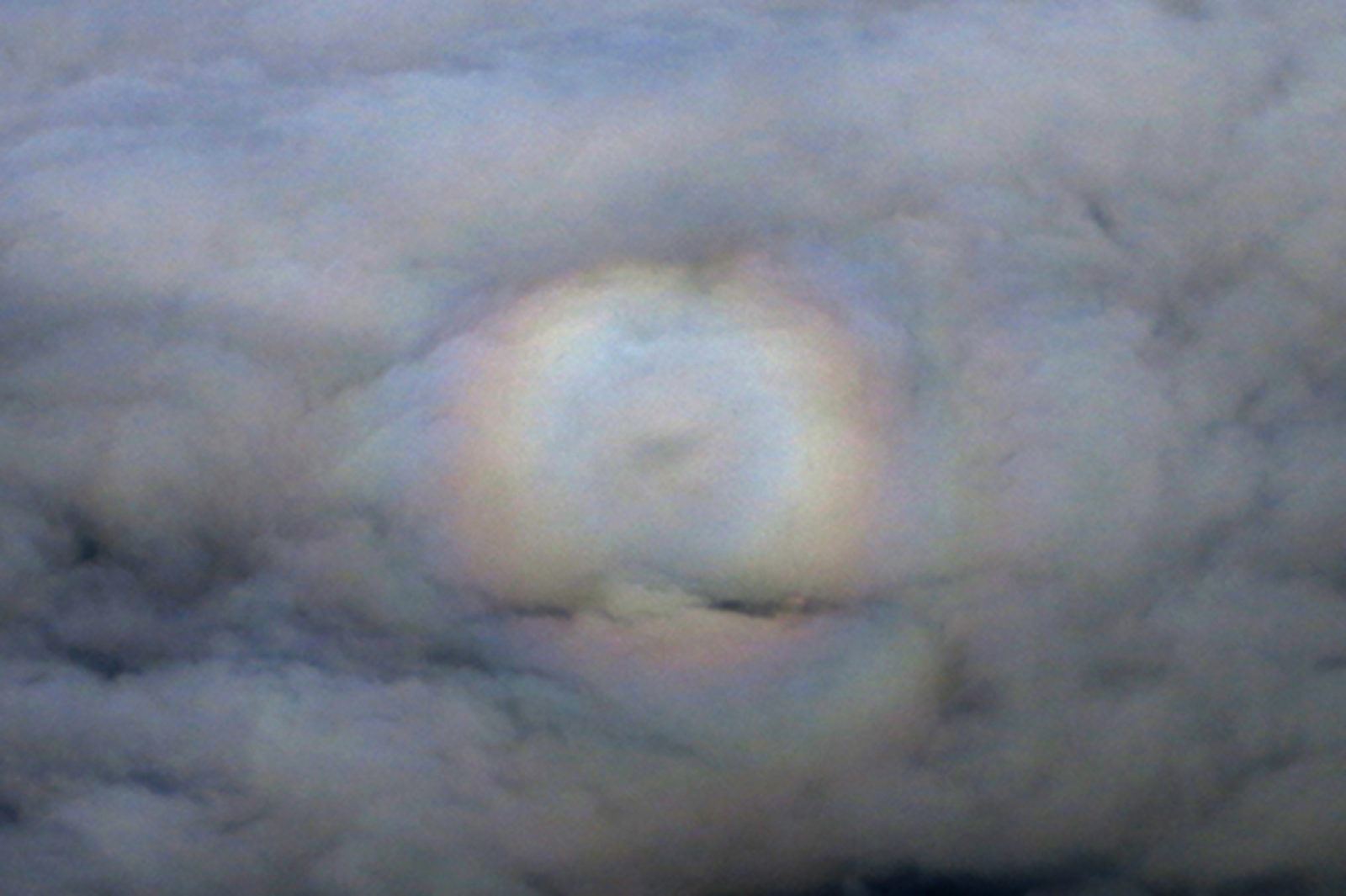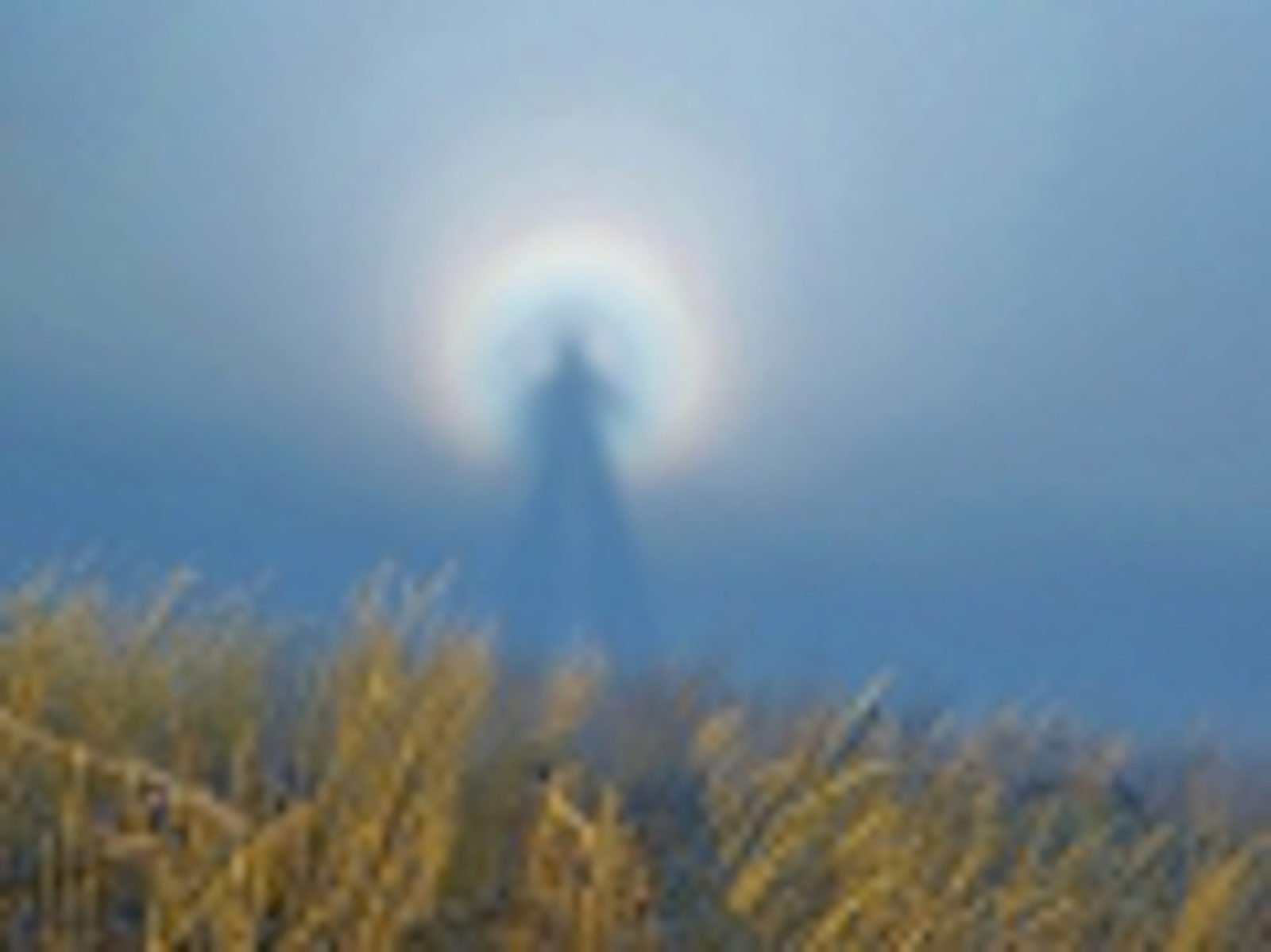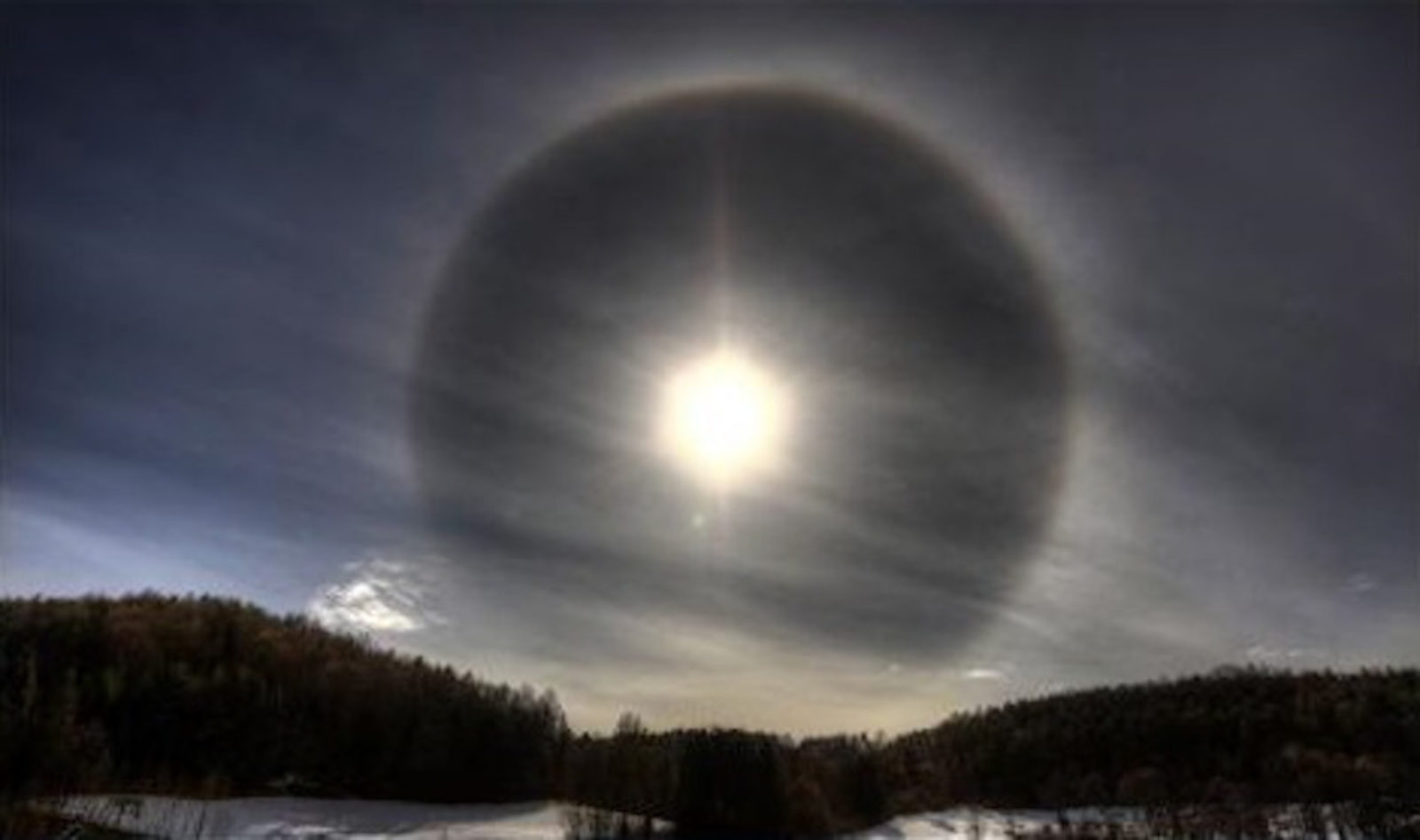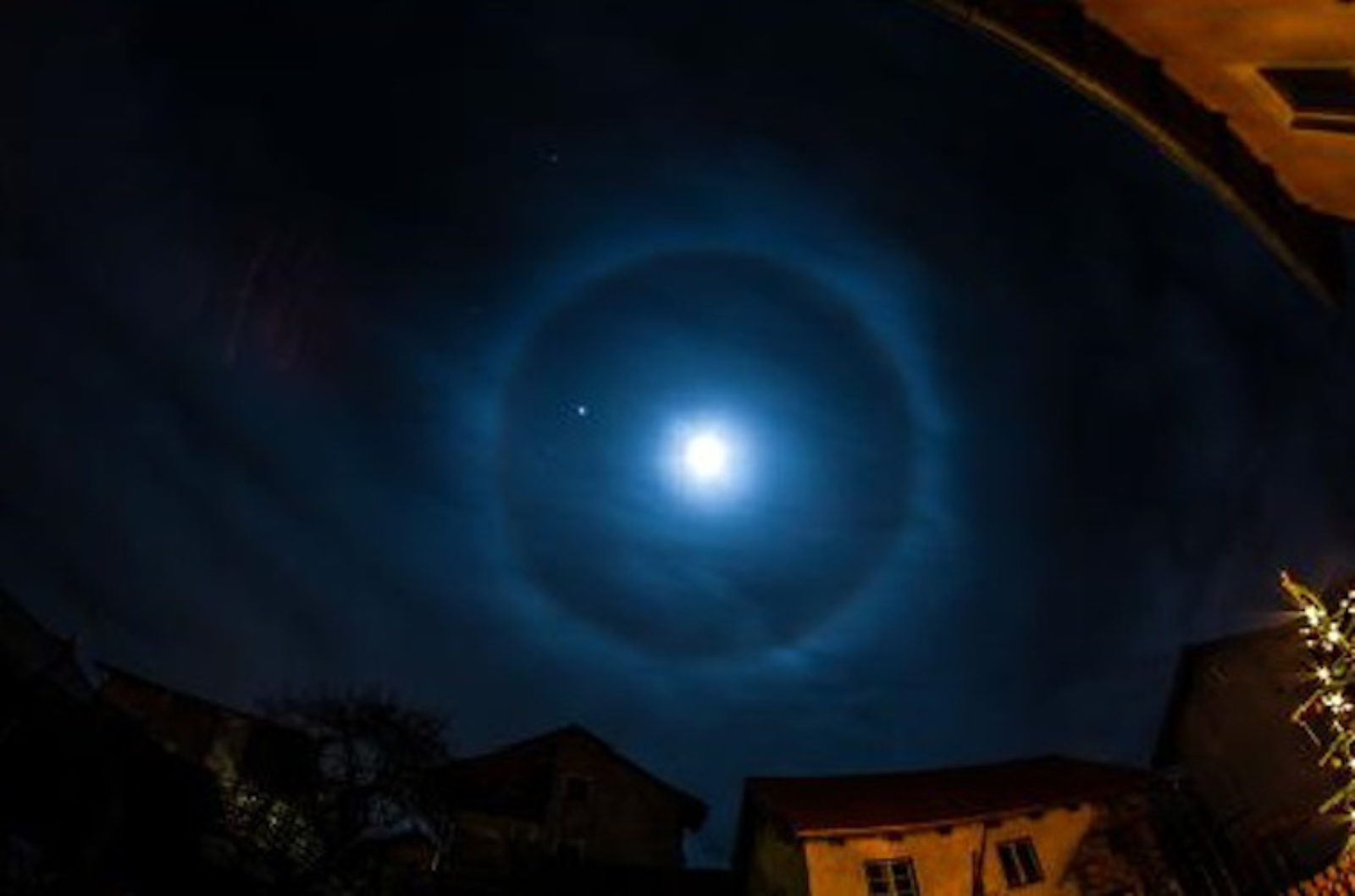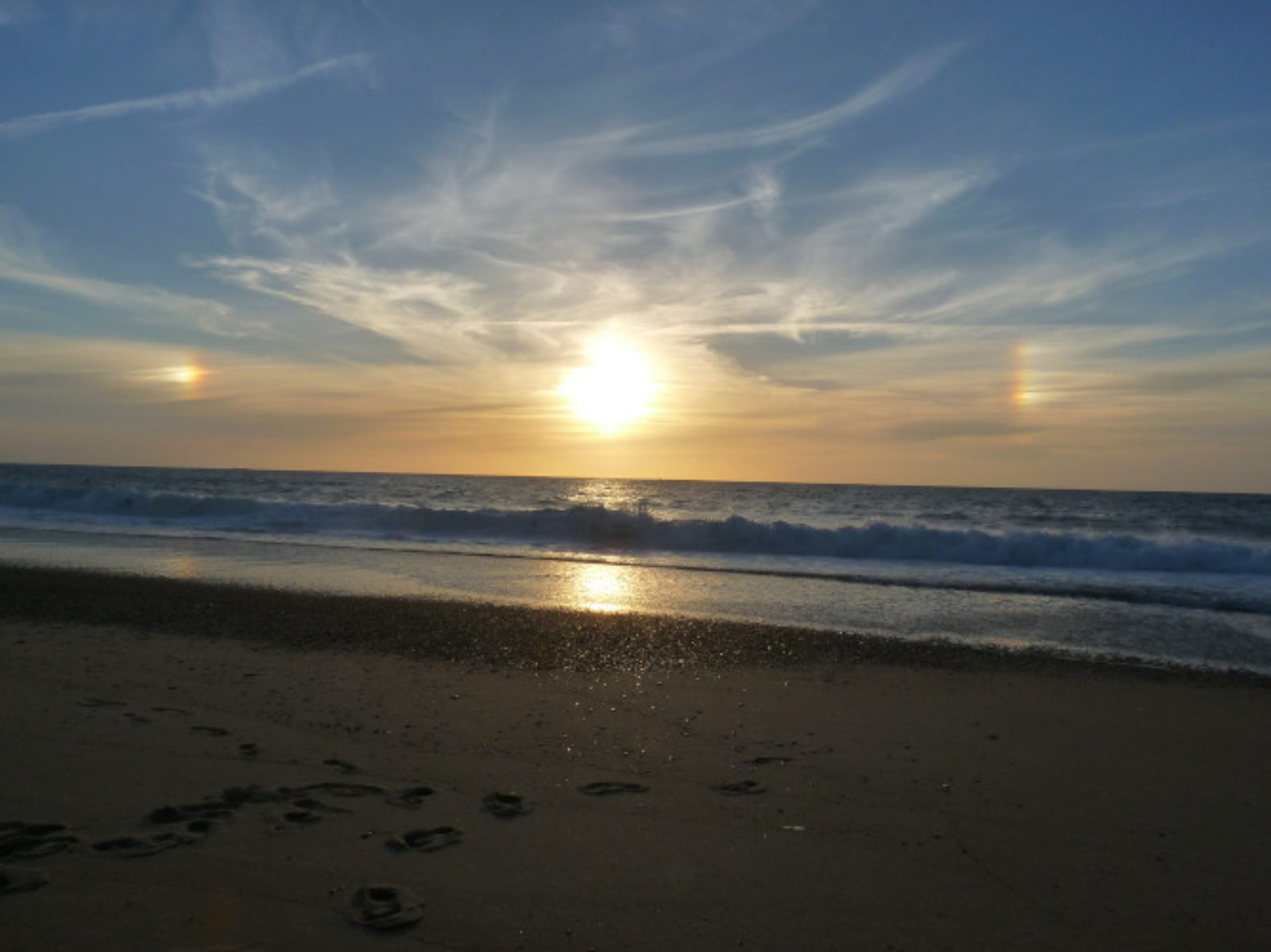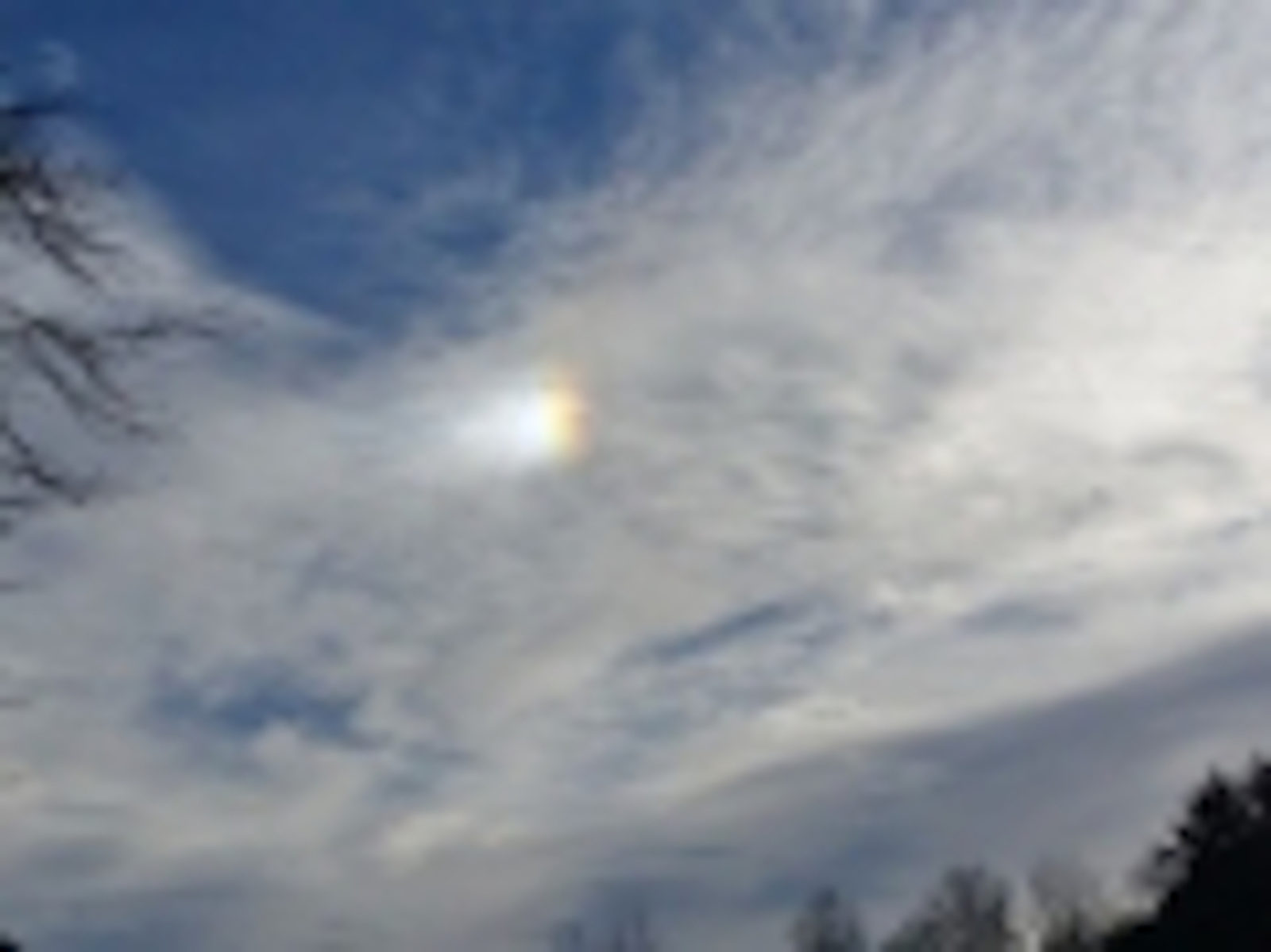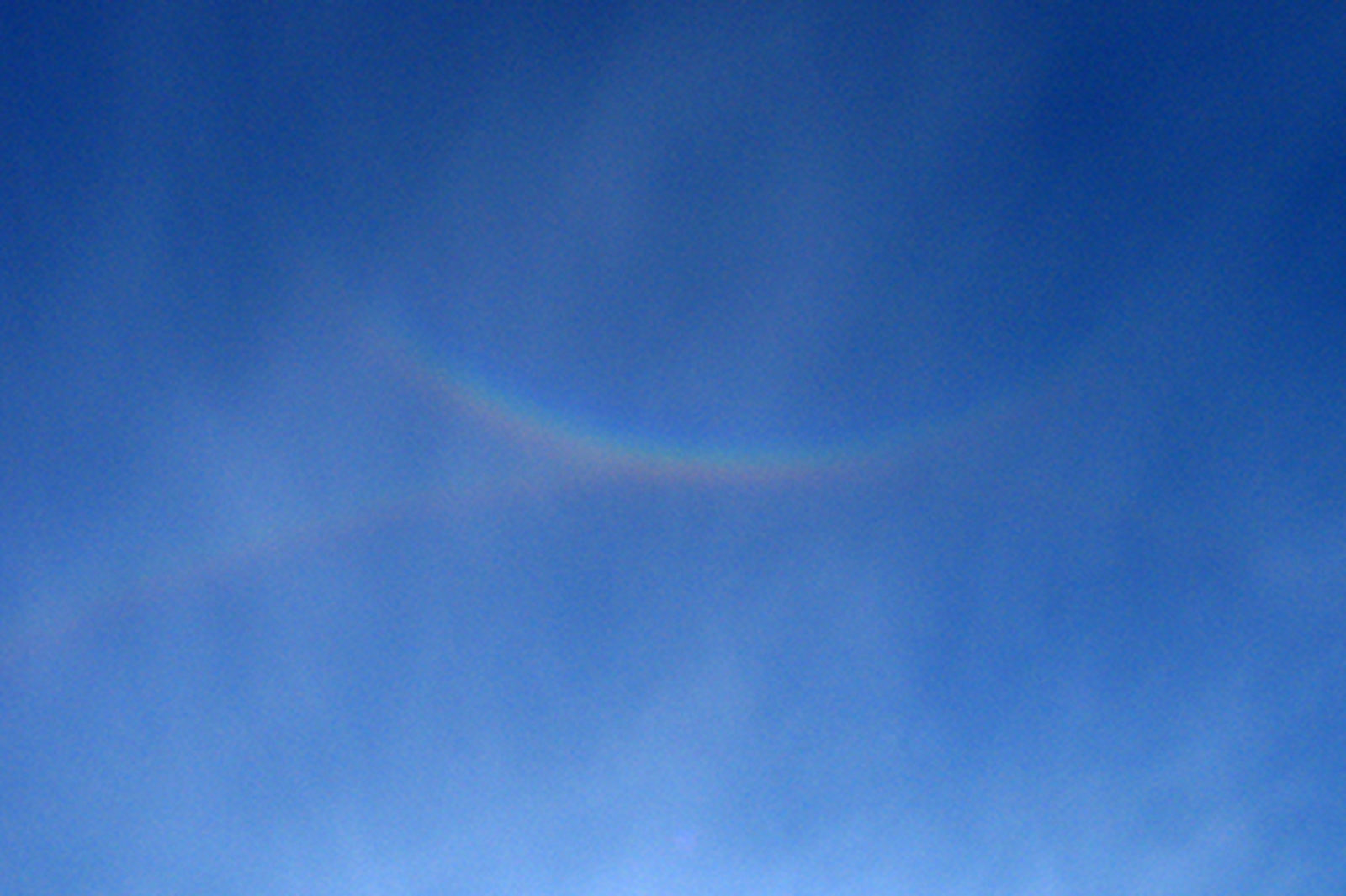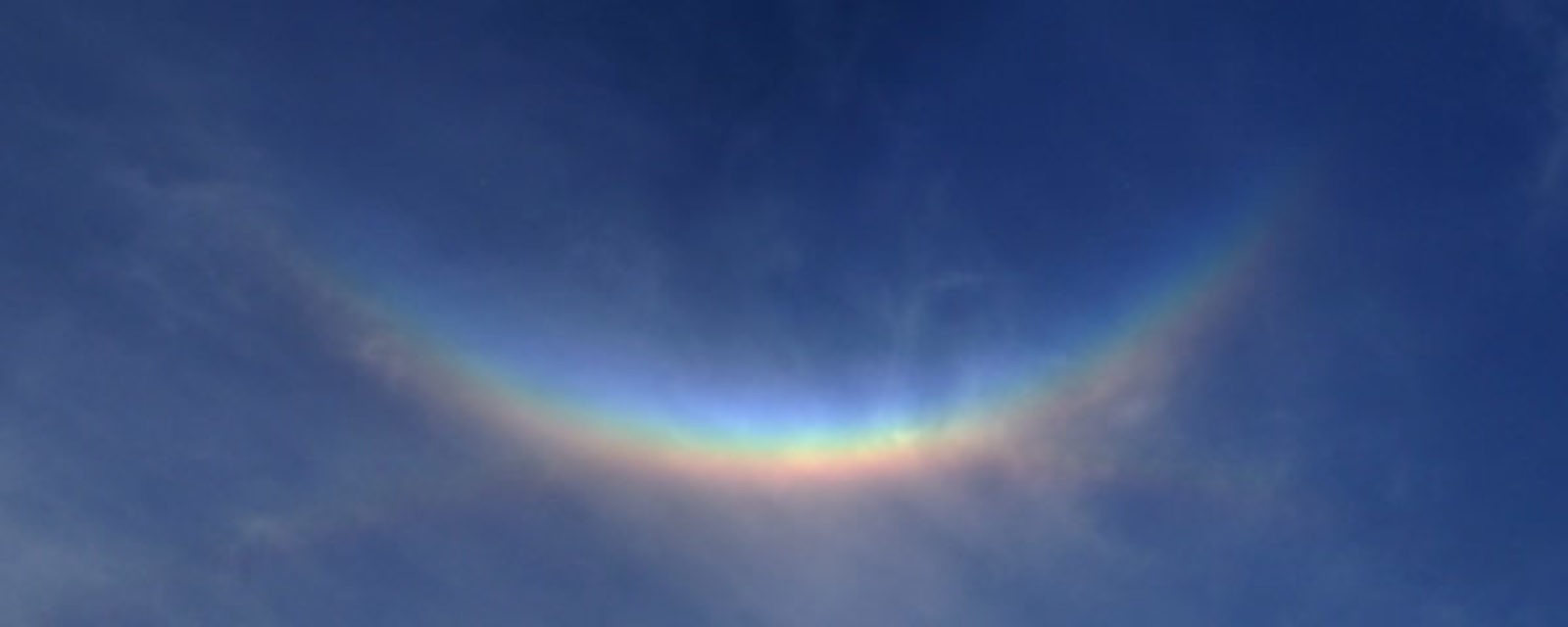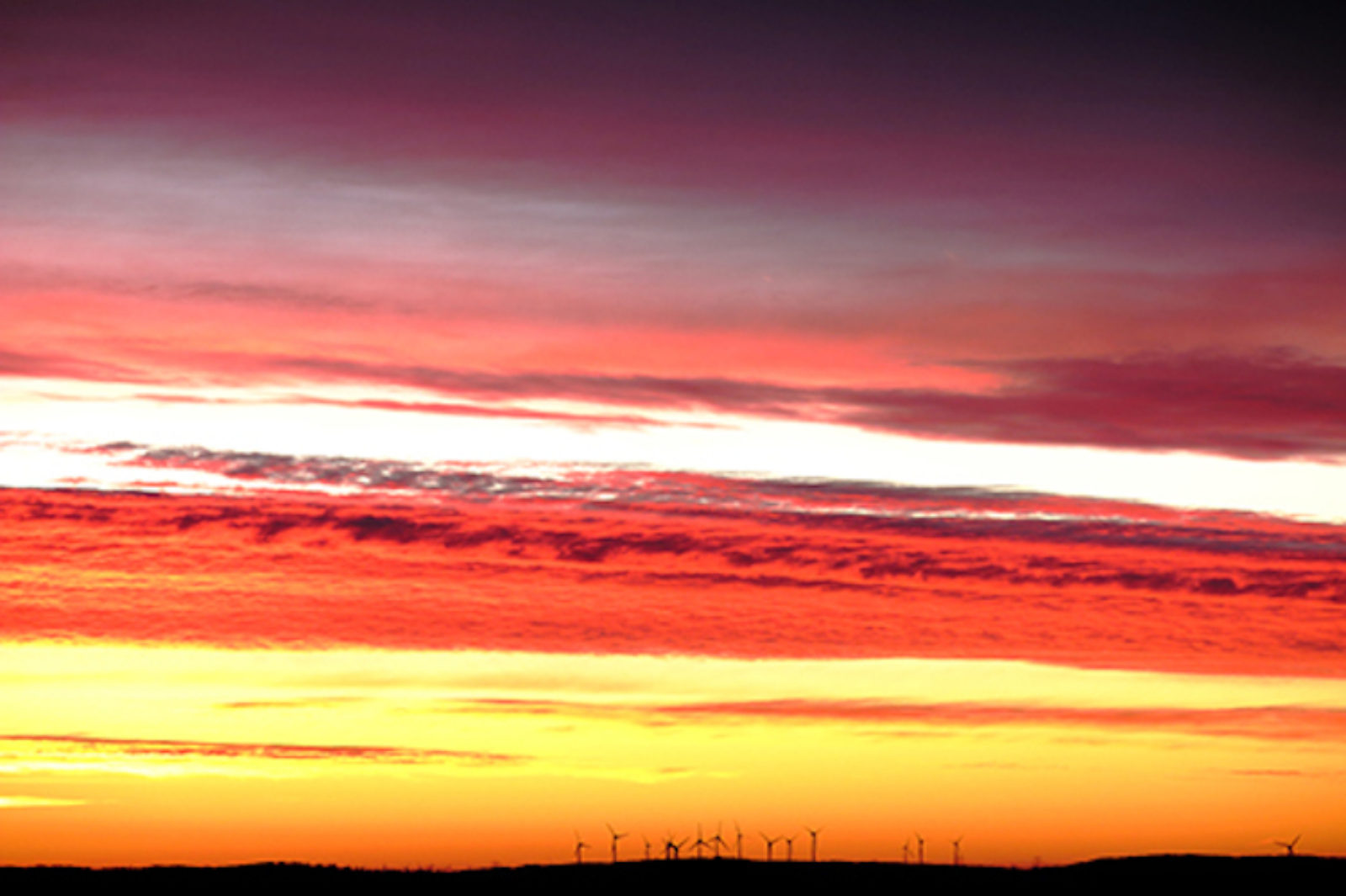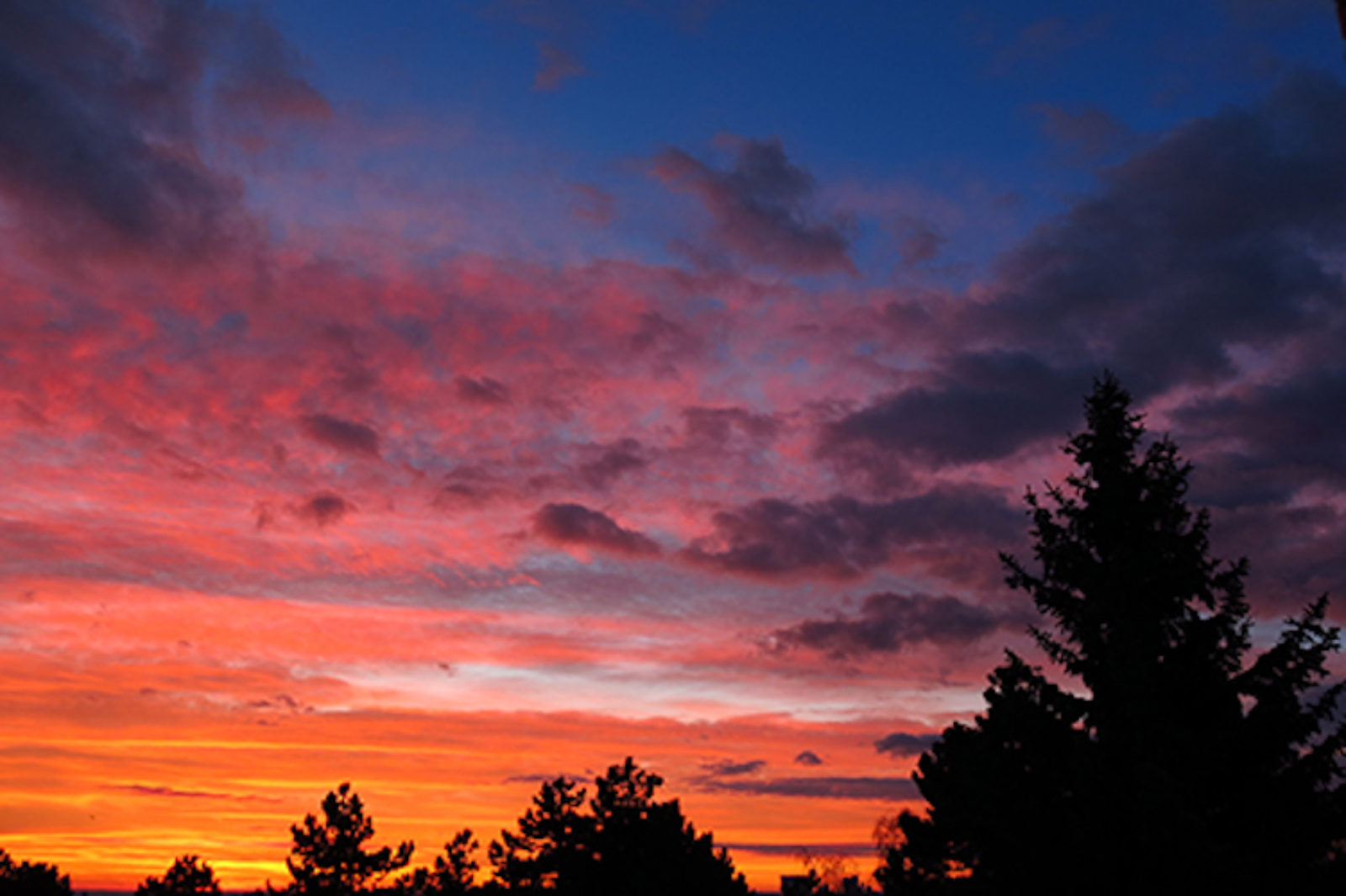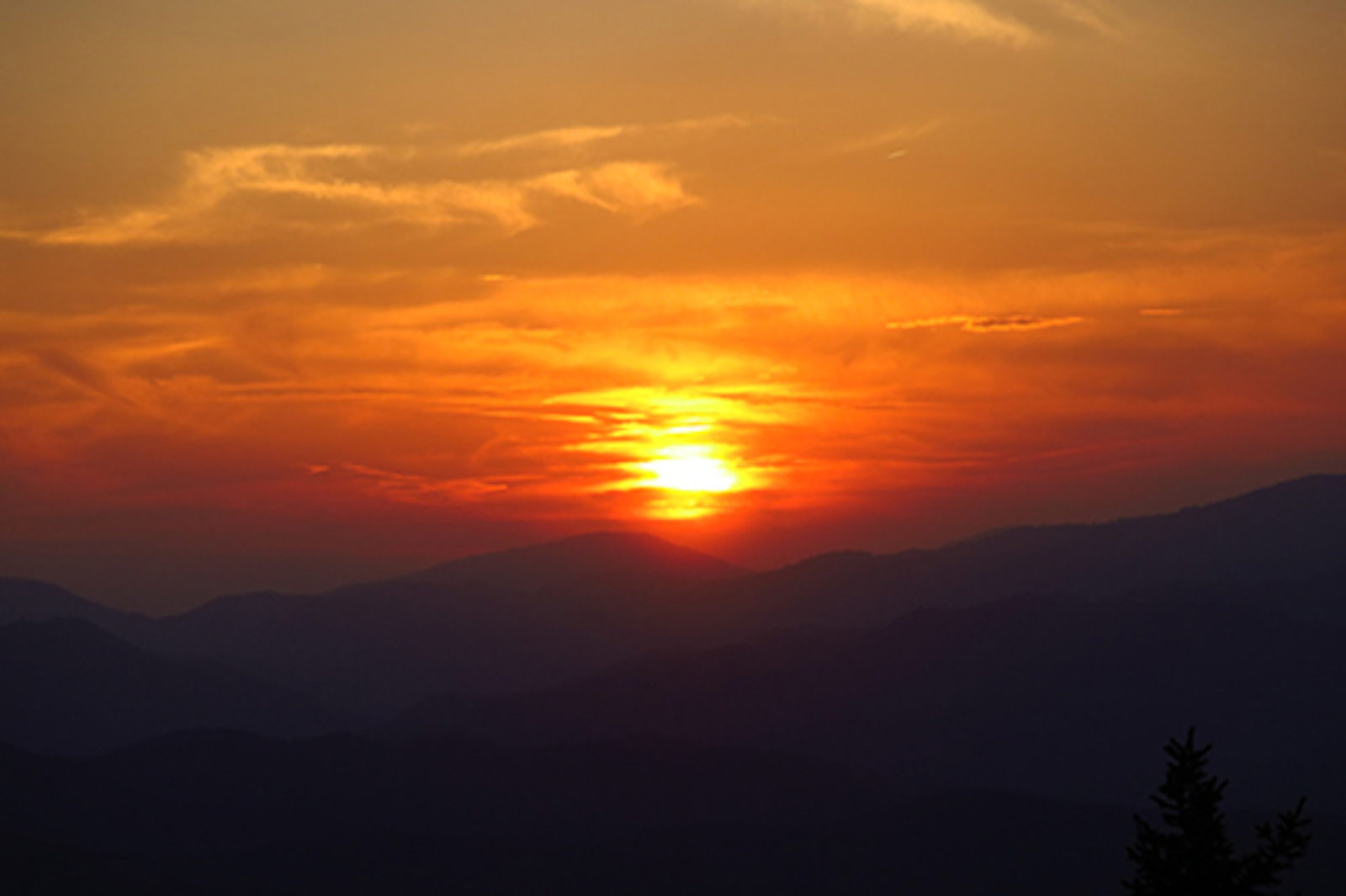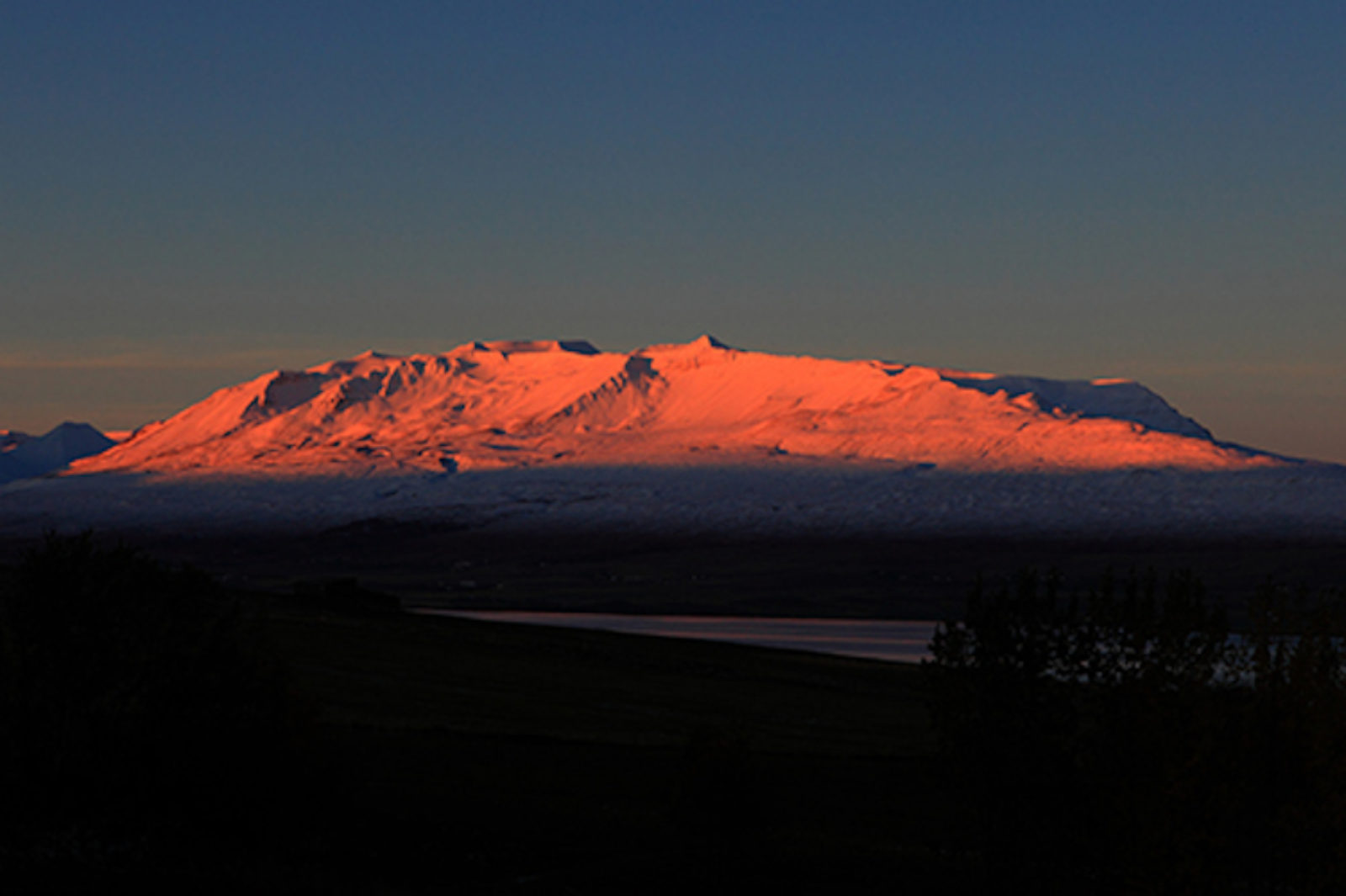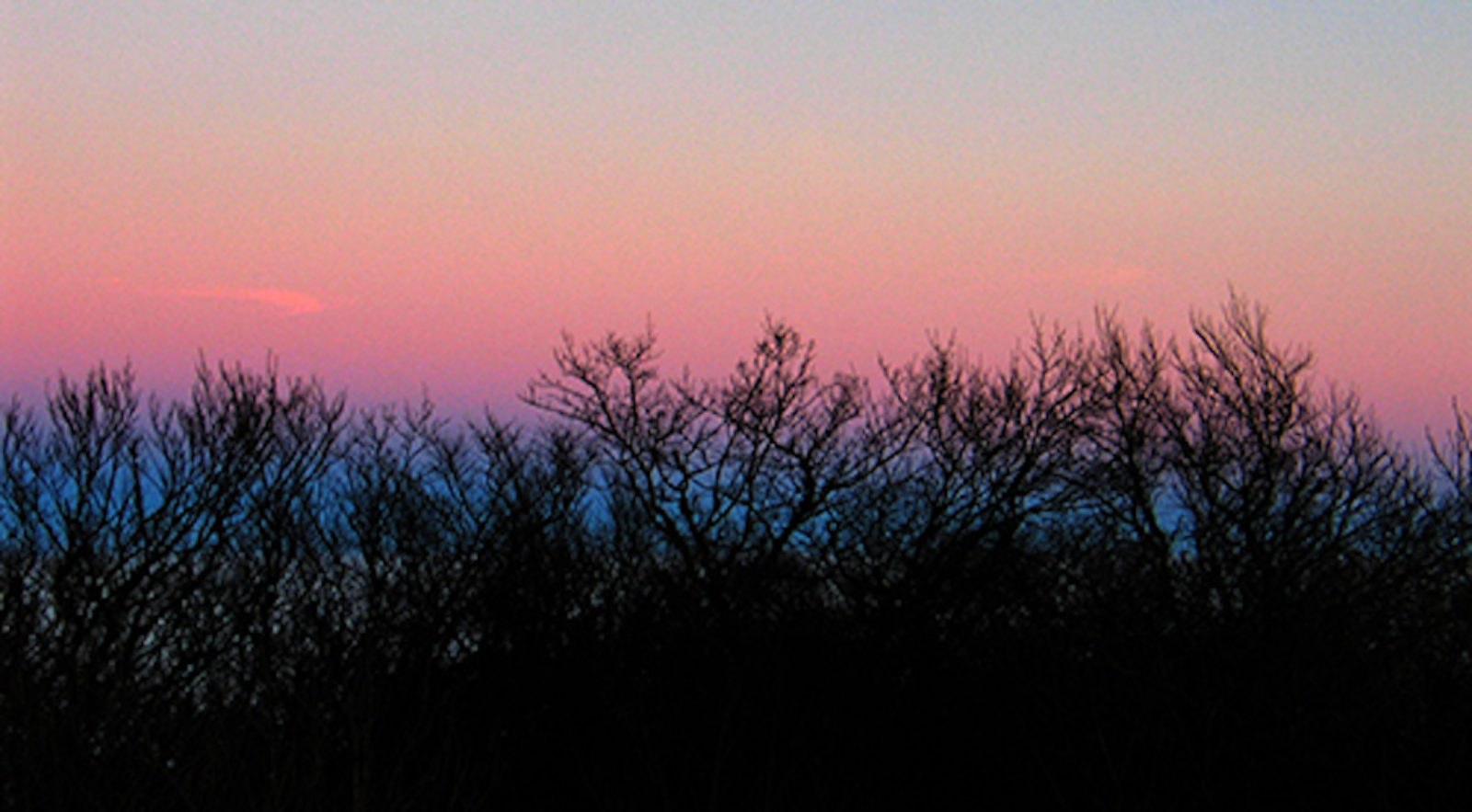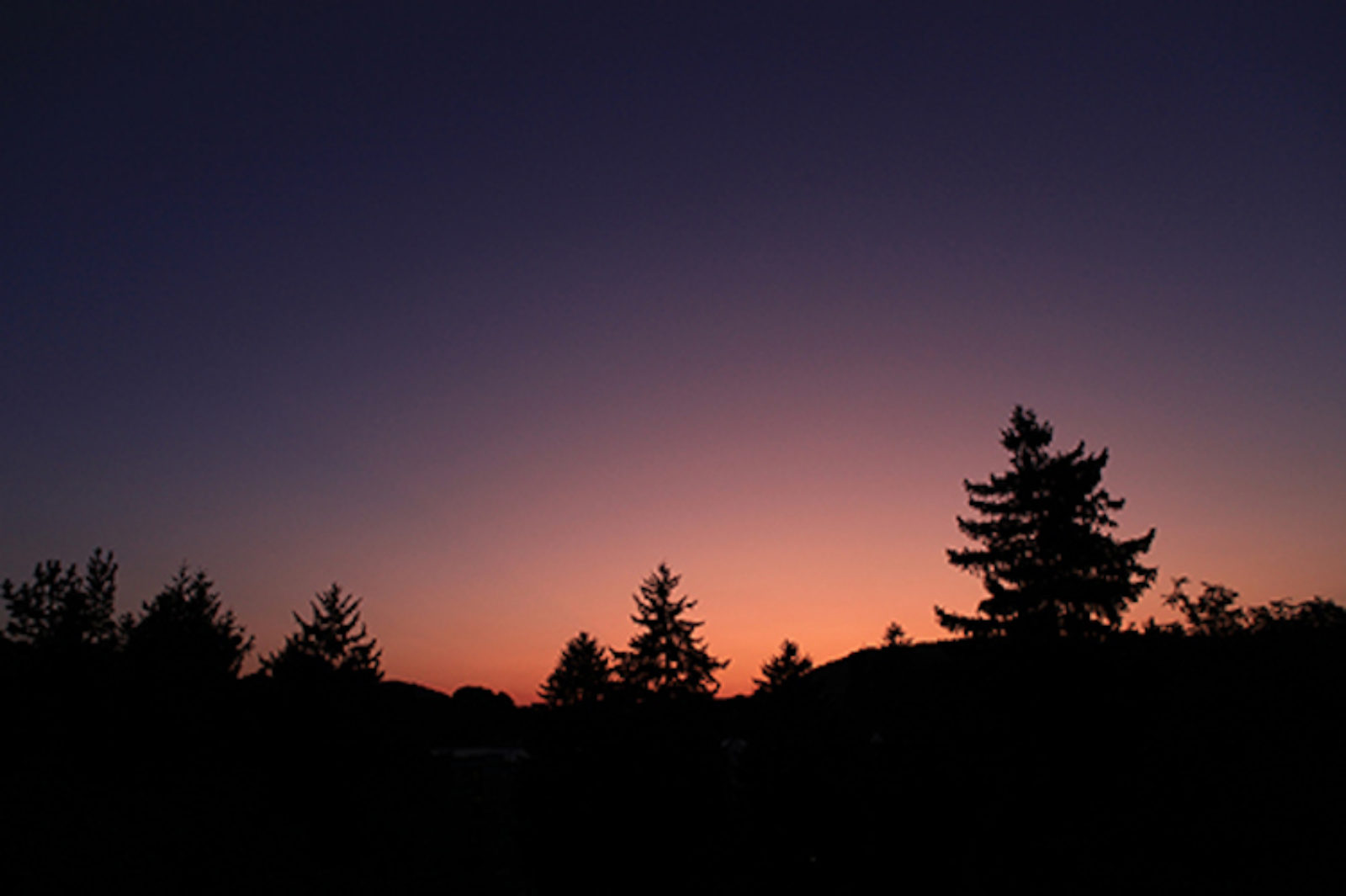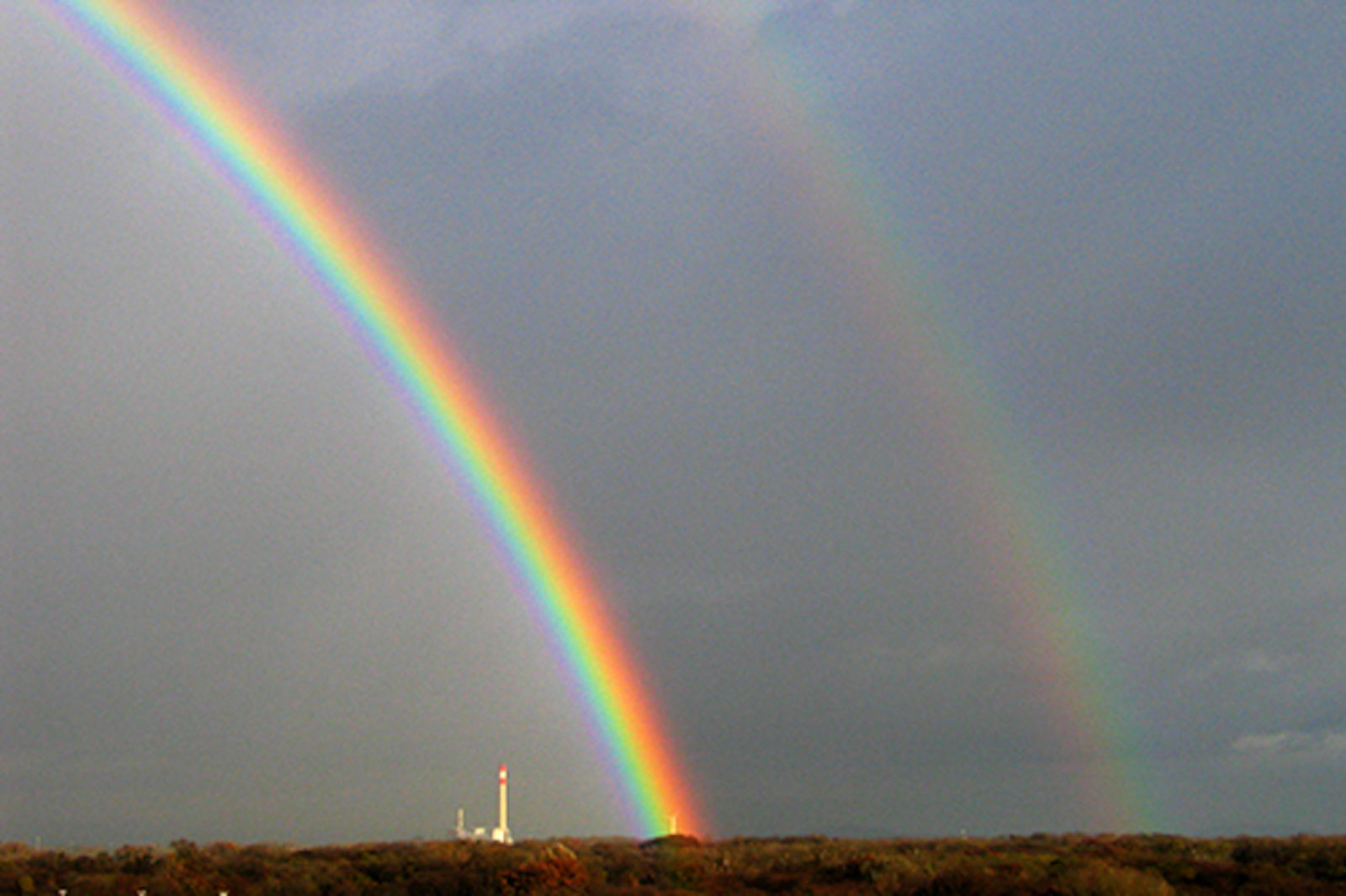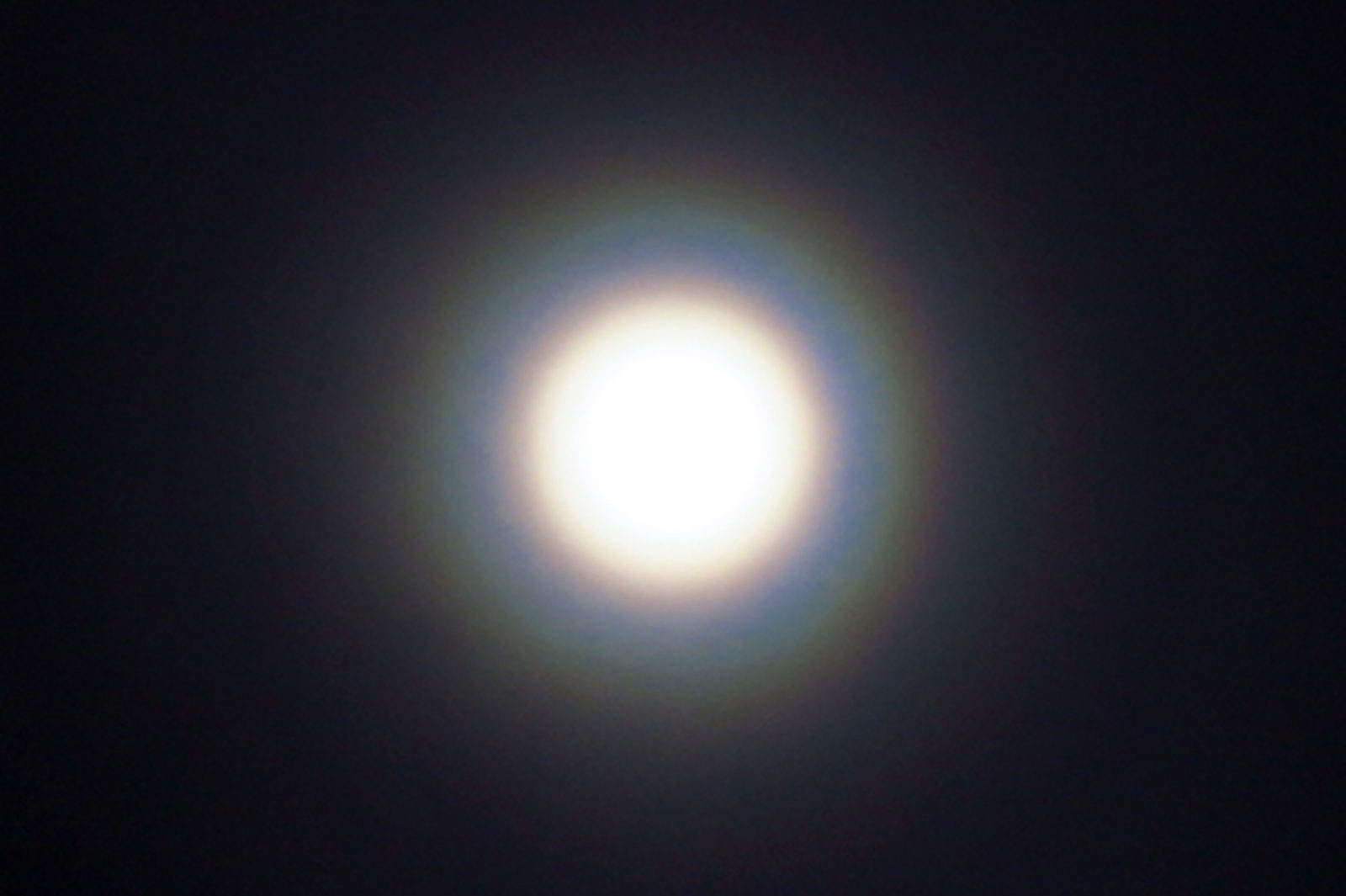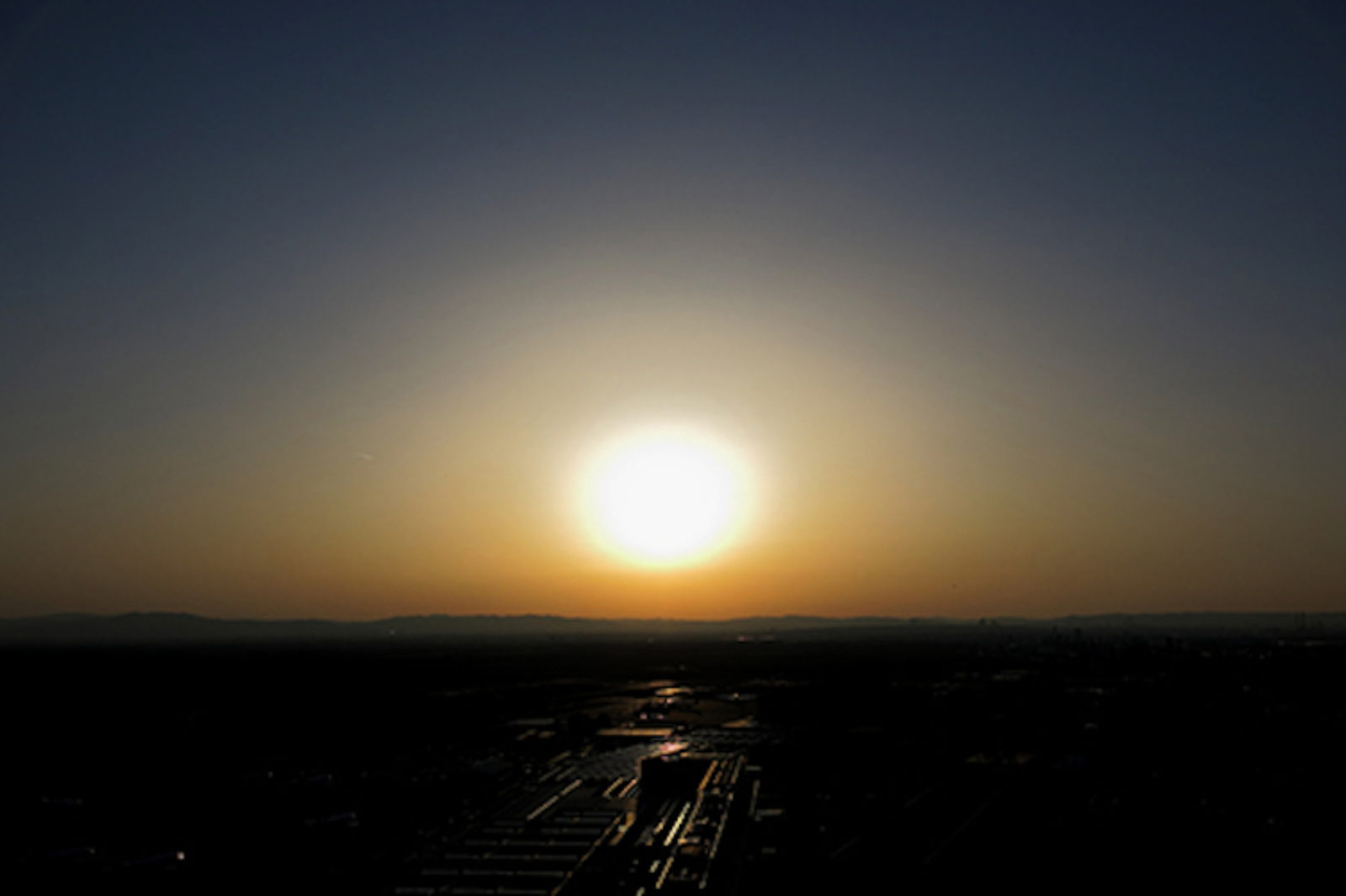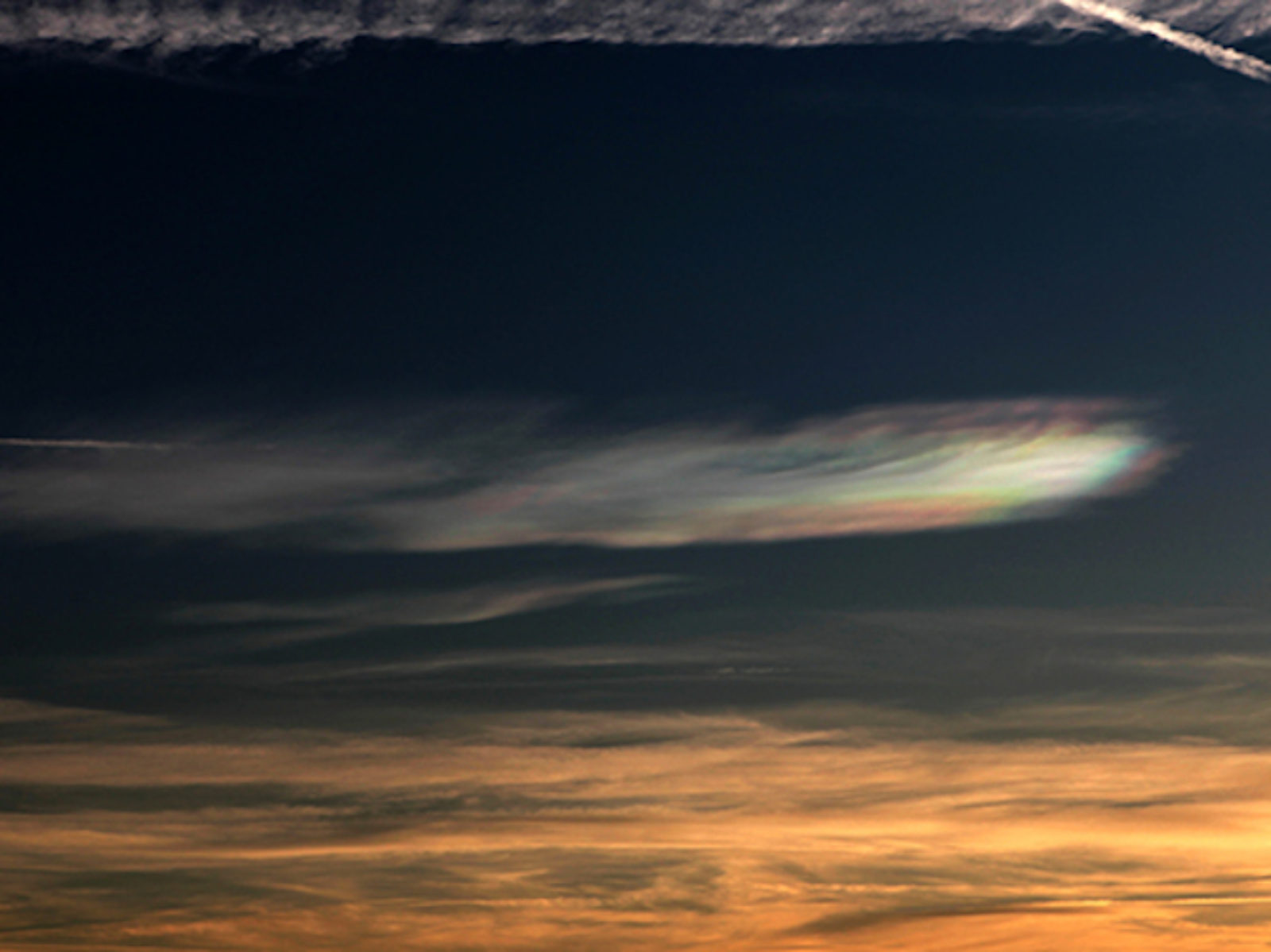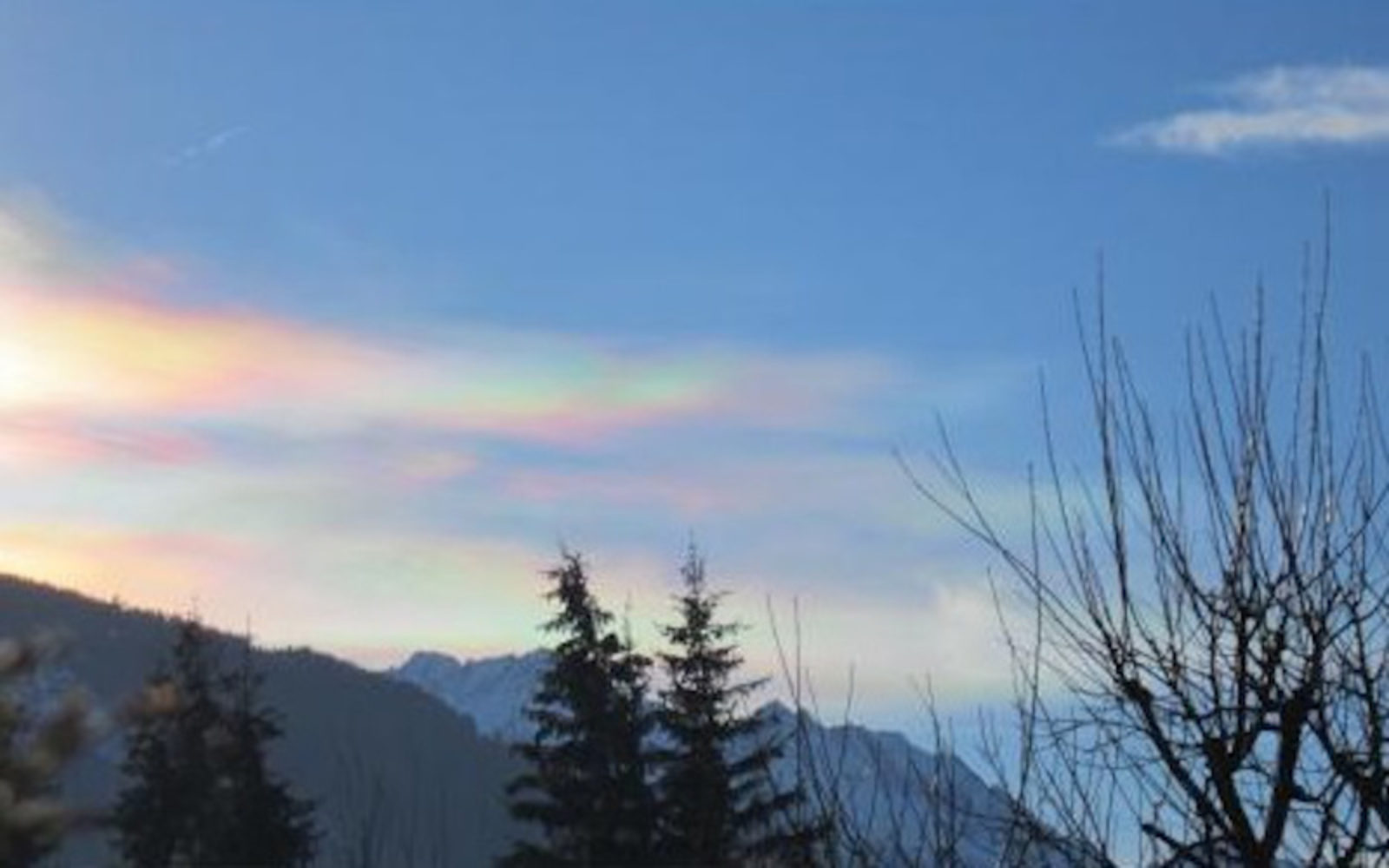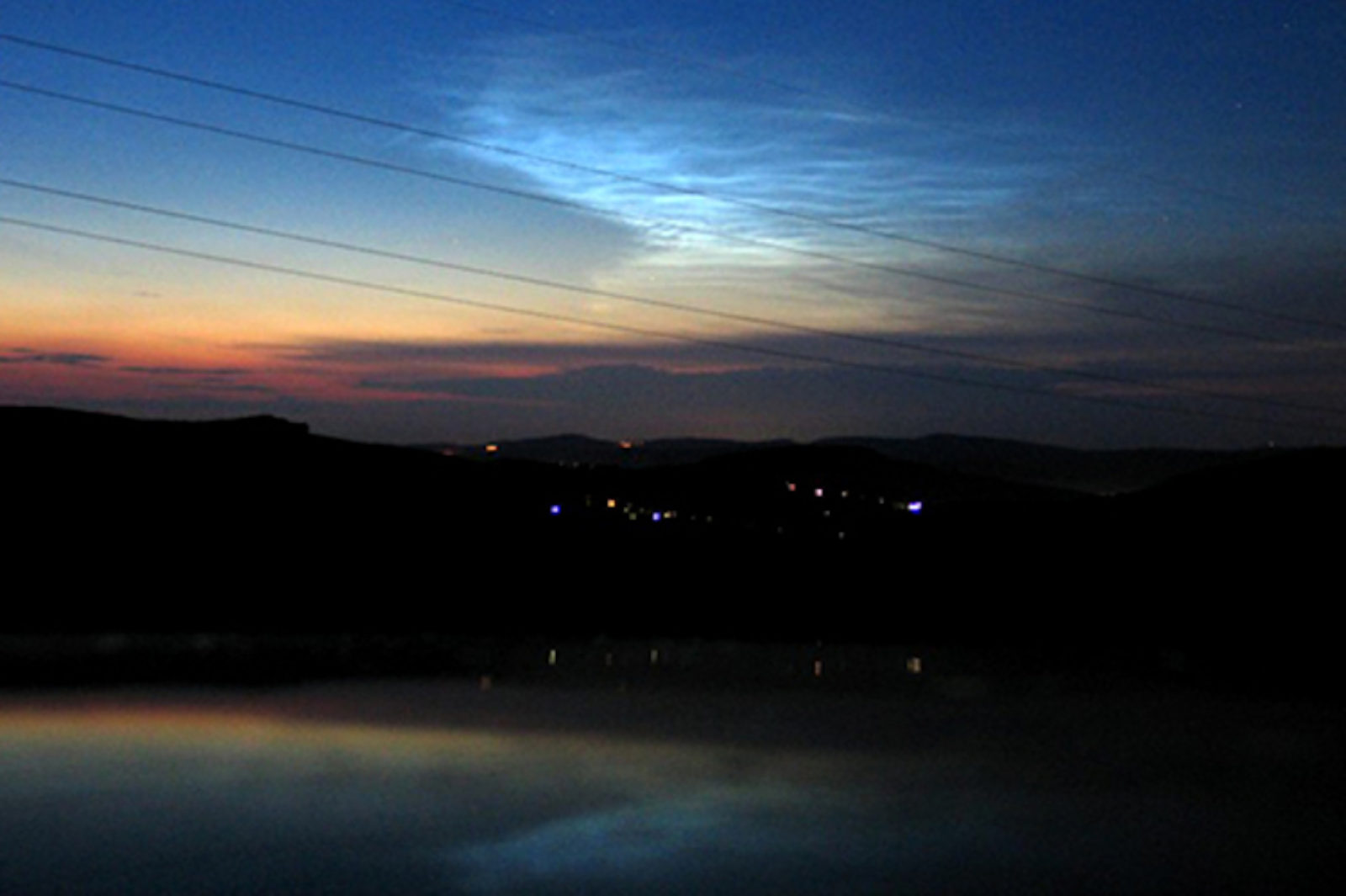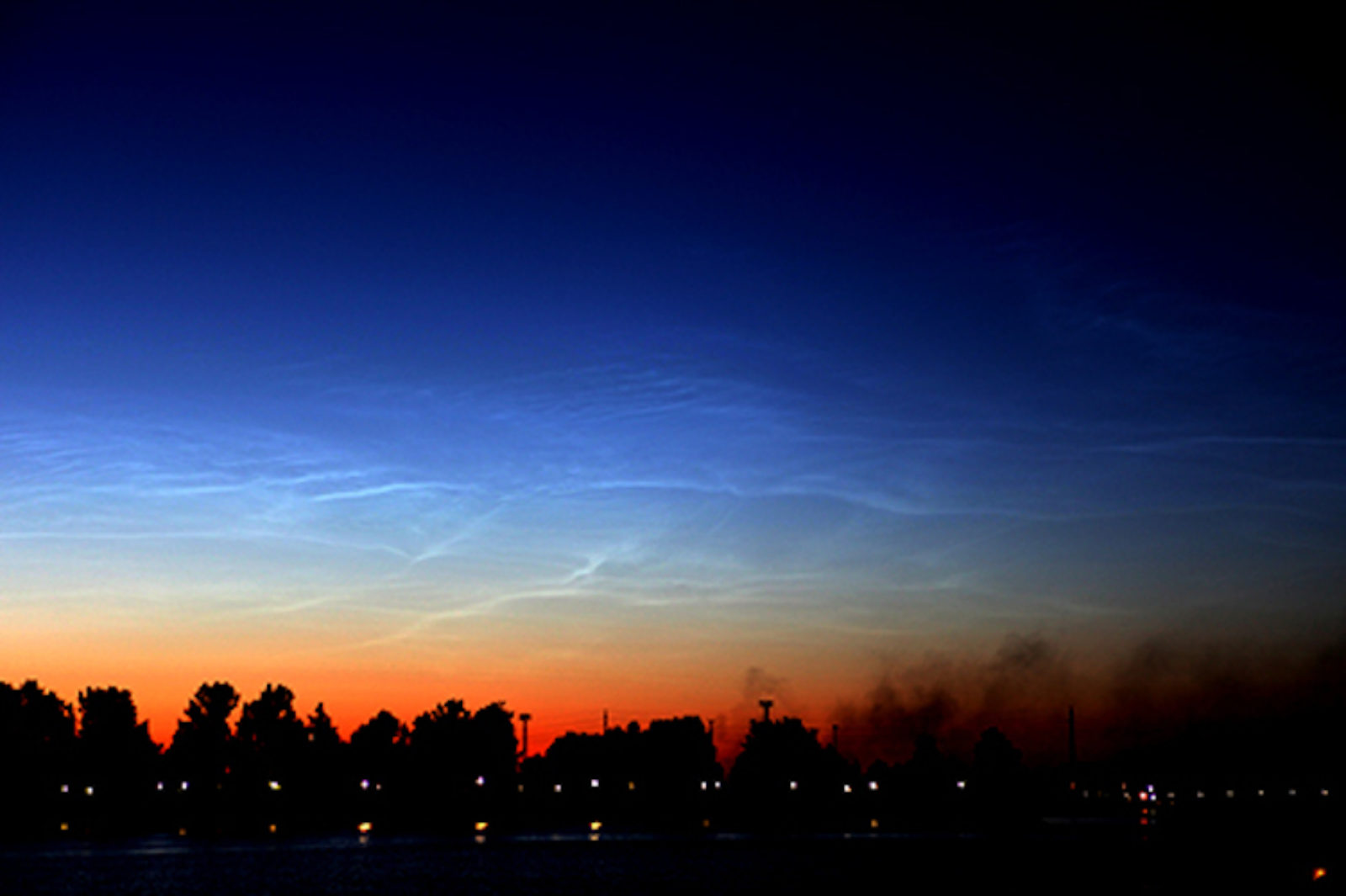For more detailed information about optical phenomena please visit the web site of our partner: http://www.auroraborealis.at/
- Reporting Parameters Overview
- Sun, clouds, temperature and optical phenomena
- Other optical phenomena
Other optical phenomena
Description
Brockenspectre: If the observer’s shadow falls on a wall of clouds or fog, this is called Brockenspectre. This phenomenon can often be seen together with Glories.
Glories: Glories are circular light effects, with concentric rings around the antisolar or antilunar point (the sun or moon must be behind the observer). The rings have a colour gradient from yellow to orange-red to blue and green.
Halo: Little ice particles in the troposphere causing a ring with sharp orange-brown tinged inner edge around the sun or the moon by light refraction.
Sundog (or: parhelia, mock suns): Coloured spots of light caused by light refraction are visible on the left and the right side of the light source (sun or moon) separated from it by about 22° when the sun is low and slightly further away when the sun is higher. The red color is on the inner side, followed by orange, yellow, green blue and diffuse white.
Circumzenithal arc: The circumzenithal arc is a coloured segment with the form of a curved arc. It is only visible at low solar altitudes (less than 32°). The colour order from the zenith outwards is violet, followed by blue, green, yellow, orange and red.
Sun pillar: A narrow vertical stripe of light is visible above the sun. During the morning and evening twilight the stripe can have a red colour too.
Sunset/Sunrise Colours: Depending on the sun position, the sky shows a yellow, orange or red colour. If high clouds are involved, beautiful plays of colour are possible.
Alpenglow: Distant, bright patches of snow or rock seem to be coloured red, if lit by the sun which is already below the opposite horizon.
Mirage: Parts of the landscape or the blue sky are mirrored upwards (superior mirage) or downwards (inferior mirage), and can be seen above (e.g. Fata Morgana) or below (e.g. hot road water “puddles”) their original position.
Zodiacal light: The Zodiacal light is a faint, triangular-shaped glow above the horizon. It appears before or after morning twilight/evening twilight.
Earth’s shadow and Belt of Venus (sometimes: twilight wedge) In clear air and close to the horizon, the earth’s shadow can be seen as a grey horizontal stripe. Above the earth’s shadow, the Belt of Venus can be seen as a pale pink light.
Purple twilight: It can be seen after sunset or before sunrise. The purple twilight is usually only a faded pink or purple colour in the sky, but can also develop a striking brightness after volcanic eruption or large-scale forest fires.
Crepuscular rays: In dusty or humid air, the sun rays are visible in contrast to the shadow of the clouds.
Secondary rainbows: Secondary rainbows are slightly above or next to the primary bow. They have fainter colours than primary rainbows, and their colour sequence is inverse from violet (outside) to red (inside).
Red rainbows: Rainbows with a remarkable red-shade can be seen if the sun is at low altitude in the sky.
Fogbows: Unlike a rainbow, fogbows show no colours but appear as a pale white circle. They can only be seen under foggy conditions.
Corona: A Corona consists of several concentric, coloured rings around the light source (sun, moon) with violet on the inside, followed by blue, green, yellow, orange and red. This feature is better to see around the moon than the bright sun.
Bishop’s Ring: A ring of faint red-brown colour visible around the sun, caused by dust particles in the atmosphere, especially volcanic ash.
Cloud iridescence: Iridescence means the pearlescent play of colours often near the sun or moon, but sometimes also further away from the sun, which sometimes resemble mother-of-pearl. High clouds are often coloured in greenish, bluish or purple pearlescent sheen.
Noctilucent clouds: Noctilucent clouds (NLCs) are fine, fibrous clouds made of ice crystals. They shine in pale, bluish silvery-white colours in the dark sky during twilight. NLCs can be seen in the Northern hemisphere (48°-64° northern latitude) during the summer months from June to mid-August.
